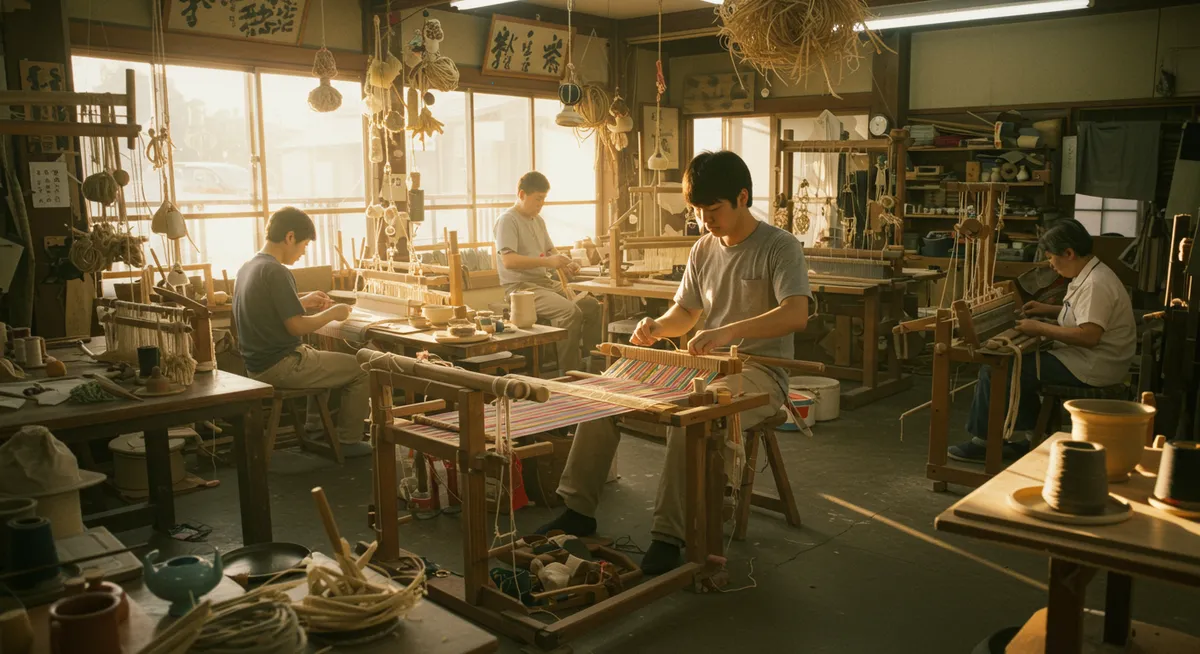
Discover Fukuoka's Traditional Crafts
Table of Contents
Want to find the best travel deals for this destination? Chat with our travel hacking specialist!
Get Travel HacksCategory: fukuoka-traditional-crafts
A Guide to Fukuoka's Enduring Traditional Crafts
Having explored Fukuoka's vibrant culture firsthand, I've always been captivated by the city's unique artistic heritage. Delve into the world of Fukuoka traditional crafts, where centuries of skill and passion are woven into stunning works of art. From delicate dolls to intricate textiles, these creations embody the soul of this Japanese city.
Hakata Ningyo: Iconic Dolls of Fukuoka
Among the most recognized of Fukuoka traditional crafts are the exquisite Hakata Ningyo dolls. These unglazed bisque dolls, often depicting beautiful women, Kabuki actors, or children, are famous for their intricate details and vivid expressions. Each doll is painstakingly hand-painted, bringing its character to life with remarkable realism. As a traveler, I still marvel at the intricate details of a Hakata doll I brought home, each facial expression so lifelike and captivating. You'll find these beautiful pieces at specialty shops and larger souvenir stores, offering a genuine taste of Fukuoka's rich cultural tapestry. They make truly timeless keepsakes.
Hakata-ori: Elegant Woven Textiles
Another cornerstone of Fukuoka's artisan legacy is Hakata-ori, a highly esteemed textile art. Known for its distinctive tight weave and lustrous patterns, Hakata-ori traditionally features thick warp threads and thin weft threads, creating a unique texture. Historically, these textiles were used for kimono obi sashes, symbolizing sophistication and craftsmanship. Witnessing the weaving process at a local workshop was truly mesmerizing, showcasing the dedication behind each Hakata-ori piece. Today, you can find modern applications like ties, bags, and small accessories, perfect for bringing a piece of Fukuoka's elegance into your life.
Hakata Magemono: Curved Wood Excellence
Hakata Magemono represents a beautiful tradition of bentwood craftsmanship. Using thinly shaved Japanese cypress or cedar, artisans skillfully bend the wood into elegant, curved shapes, often creating functional items like bento boxes, containers, and trays. The natural wood grain and minimalist aesthetic are key features, making these pieces both practical and artistically pleasing. I found a beautiful Magemono lunch box on my last Fukuoka trip; it perfectly blends tradition with everyday utility. This art form embodies a respect for natural materials and sustainable design, reflecting a timeless approach to utility.
Experiencing Fukuoka Traditional Crafts Firsthand
To truly appreciate Fukuoka traditional crafts, seek out opportunities for direct engagement. Many local museums, such as the Fukuoka City Museum and the Hakata Traditional Craft and Design Museum, showcase historical and contemporary pieces, offering context and insight. For an authentic experience, I highly recommend visiting craft centers where you can often watch artisans at work, or even participate in workshops to try your hand at specific techniques. These experiences allow a deeper connection with the art and provide unique souvenirs. Consider visiting during less crowded times for a more intimate view of the creation process.
Frequently Asked Questions
What are the most famous Fukuoka traditional crafts?
Where can I buy authentic Fukuoka crafts?
Can visitors try making traditional crafts in Fukuoka?
Exploring Fukuoka traditional crafts offers a profound connection to Japan's artistic soul. From the delicate beauty of Hakata Ningyo dolls to the intricate patterns of Hakata-ori textiles, each piece tells a story of enduring skill and heritage. These timeless creations serve not only as exquisite souvenirs but also as windows into the heart of Fukuoka's vibrant culture. Don't miss the chance to discover these incredible artisan traditions on your next visit to this captivating Japanese city.